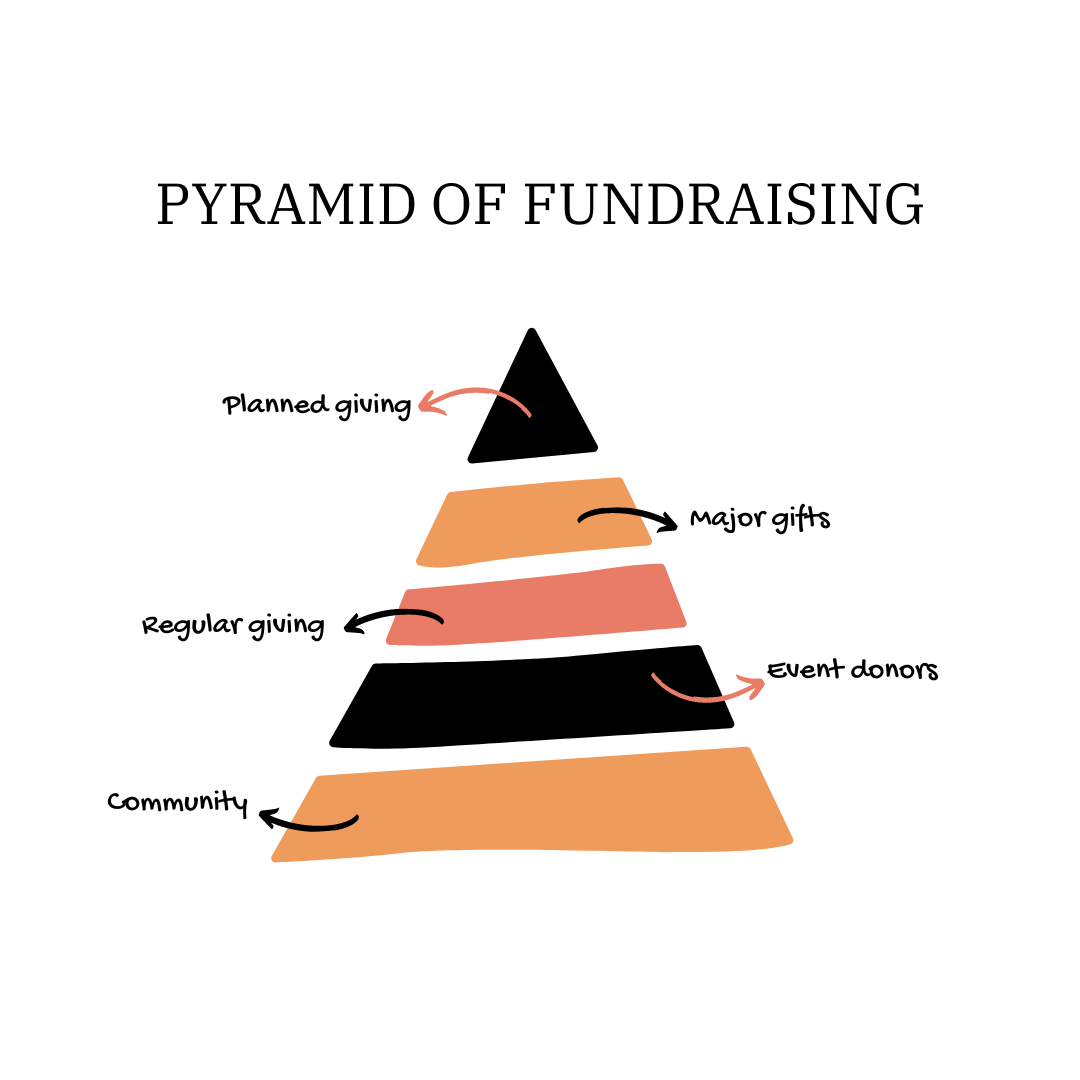By Adriana Williams
Why is engagement important
The traditional pyramid, or its inverted “funnel” counterpart, is (in my opinion) the best demonstration of the role that engagement plays in fundraising. Whether at the top or the bottom, the slice named ‘community’ or ‘potential donors’ is certainly where the vast majority of our constituents sit. In order for them to move up the ladder – or through the funnel – potential donors need to be informed, involved and interested what we do. They need to be engaged, and it is our responsibility as fundraisers to do this. The most popular ways of engaging our audience are events, communications and one-to-one relationship building.

How to measure it
Engagement is a deeply human, largely immeasurable quality that changes over time. How can we possibly hope, in one number, to capture the myriad complexities of human relationships and emotions. The answer is: we can’t. All that we can try to do is observe a variety of measurable behaviours (e.g. RSVPs, attendance, feedback, meetings, opening and clicks on emails) and hope that, in most cases, they indicate what we think they do. That a “yes” to an event means that they like coming to see us; that consistently opening our emails means that they’re interested in what we have to say.
Measuring engagement behaviours helps us as professionals to see what works and what doesn’t, and can indicate ways to improve or message/medium of delivery. The more we can track behaviours, and changes in them, the more likely we are to have an insight into a group’s (or an individual’s) engagement. Therefore, one single behaviour (e.g. event attendance) should not be the sole measure of engagement, but rather paired with as many behaviours as you are able to measure. Here are some examples below:
- RSVP – do they even bother to get back to you?
- Email open rate
- Click through rate
- Visits/ tours of the institution/ charity (and did they bring family)
- Updating contact details
- Accepting meetings/ stewardship events
- Giving unsolicited feedback (positive or negative)
- Survey entry
- Contact with other members of the charity’s staff (not necessarily the fundraisers) – how engaged do they think that person is (out of 5, perhaps)?
- Donations (number of donations, and what prompted the gift(s))
I have focussed mainly on quantifiable behaviours, but don’t forget to look at the qualitative data shared in meetings, feedback and surveys. Although they can be hit-and-miss at predicting future behaviour, surveys are fantastic for giving a snapshot of engagement at a moment in time and can offer excellent, community-led guidance for future improvements.
How to analyse it
Whatever you measure, it’s not quite as easy as just “adding it up”. Is a regular donation ‘less engagement than’ a major gift? Is attending three online information events ‘equal engagement to’ attending two cultivation events plus one stewardship event in person? It all depends on what good engagement looks like to you. The data you collect needs to be weighted against what your goals are and on what engagement looks like for your charity.
Consider your team’s mission and KPIs: how can engagement measurement be aligned with those? Give more weight to those measures that you believe are true indicators of engagement for your community.
What happens next? Things to remember:
- The first draft doesn’t have to be the perfect calculator, keep playing about with it, see which weightings work for you.
- Remember that this one ‘number’ is not the one and only source of ‘truth’ for engagement. Your intuition and experience are also very valuable.
- Engagement will change over time for each person: track over time and see if anything changes.
How do you track and measuring engagement? Share your ideas below, we love to hear about your solutions!
